Gallery
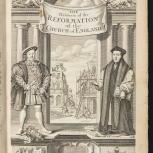 The History of the Reformation of the Church of England:
in Two Parts.
The History of the Reformation of the Church of England:
in Two Parts.
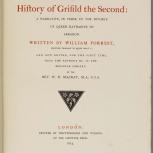 The History of Grisild the Second (Online exclusive)
The History of Grisild the Second (Online exclusive)
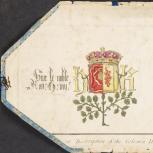 The Great Tournament Roll of Westminster
The Great Tournament Roll of Westminster
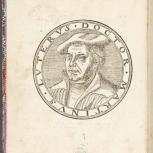 Vom christlichen Abschied aus diesem tödlichen Leben des
ehrwirdigen...
Vom christlichen Abschied aus diesem tödlichen Leben des
ehrwirdigen...
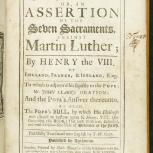 Assertio septem sacramentorum
Assertio septem sacramentorum
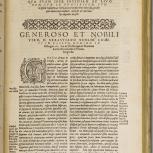 Thomae Mori Angli
Thomae Mori Angli
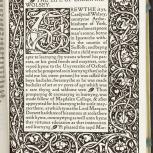 The Life of Thomas Wolsey, Cardinal Archbishop of York
The Life of Thomas Wolsey, Cardinal Archbishop of York
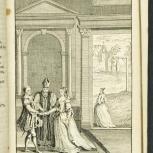 England's Reformation
England's Reformation
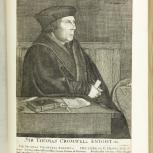 A Biographical History of England from Egbert the Great
to the Revolution
A Biographical History of England from Egbert the Great
to the Revolution
A world shattered
Martin Luther was a monk and professor of moral theology at the University of Halle-Wittenberg. On 31 October 1517, he sent 95 theses disputing the power of indulgences to the archbishop of Mainz and, in line with university custom, probably posted them on the door of All Saints Church, Wittenberg. In doing so he sparked a movement that was to shatter the unity of the Catholic Church in Europe. His criticisms of ecclesiastical corruption, in particular the sale of ‘indulgences’—certificates giving the purchaser a reduction in their period of suffering in purgatory after death—were reproduced in pamphlet form and disseminated widely, thanks to the revolutionary mechanisation of print technology. A network of theologians such as Jean Calvin and Ulrich Zwingli could now not only communicate or argue with each other more easily, but for the first time share their thoughts quickly with a wider public. The result was the Protestant Reformation.
At first, England was largely sheltered from the ensuing turmoil of doctrinal reformation and counter-reformation that swept across the continent; indeed, Henry VIII had authored Assertio septem sacramentorum (In Defence of the Seven Sacraments) in 1521, rejecting Luther’s ideas and earning him the title ‘Defender of the Faith’ from the Pope. In England, the impetus for Reformation was very different: it came from Henry VIII’s desire to wed Anne Boleyn and father a son to succeed him, even though he was already married to Catherine of Aragon. The Pope’s reluctance to grant an annulment led to a radical solution: Henry overthrew the authority of Rome and established himself as the Head of the Church of England with the Act of Supremacy in 1534.
The consequences of taking England outside the family of Catholic states were profound. In particular, it had a major impact on London throughout the sixteenth and early seventeenth centuries, as it grew into one of the world’s largest cities. Focusing on London during this period, Reformation: Shattered World, New Beginnings traces the impact of the Reformation on culture and society; the way its communications industry drove change; and the consequences of the emergence of a new world order.
The Impact on London
London’s position as a principal centre of commerce in northern Protestant Europe, as well its place at the heart of the English print industry, meant that new religious ideas spread rapidly. London became a magnet for migrants and refugees from the continent, swelling the existing foreign-born mercantile communities. In particular, Huguenots fleeing persecution in France arrived in large numbers, as well as settlers from the Low Countries escaping the Catholic counter-reformation. In consequence the city’s population rose from around 50,000 in 1530 to over 200,000 by 1600. Yet there was a real concern that England’s decision to break away from Rome would result in an economic, or even military, backlash from the Continent, and that important trading links would cease.
Henry VIII’s wholesale dismantling of England’s monasteries in the 1530s meant that many key London landmarks and buildings changed hands, since nearly half of all property had been owned by monastic institutions. Consequently the city developed a different cultural feel, with outbreaks of iconoclasm and destruction of religious images—organised vandalism—that many found distressing to witness. The knock-on effect of the dissolution of the monasteries was to shift their former role as providers of welfare (healthcare and shelter for vulnerable elements of society) into secular hands that were not always ready to take them on. As the century progressed, this contributed to a growing sense of insecurity as poor harvests also increased the number of ’sturdy beggars‘. The resulting reaction against vagrants heralded the Elizabethan Poor Laws. London, given its rapid population growth, was particularly affected.
During this period, London was gripped by a particular intensity of change that was unique in England, created by the exceptional concentration of people living in one square mile. Tension rose on the streets as radical preachers from both sides of the religious divide used sermons to express their views, alongside ideological warfare by pamphlet—the equivalent to the explosion of social media and proliferation of ‘alternative facts’ today. A deep-rooted suspicion of popery pervaded society, with bans on foreign travel to Italy enforced. Punitive measures were imposed to ensure religious compliance: failing to swear the oath of supremacy, for example, carried terrible penalties, and people were shocked to hear stories of the arrest of bishops and the execution of clergy as the law was enforced.
In a time before universal literacy, and when even the capacity to travel beyond the village of one’s birth was beyond many, religion provided a lens through which people understood the world around them, and a comfort that explained the hardships of daily life. Rapid changes in local religious practice, of which the destruction of the monasteries was a major part, profoundly affected people at an everyday level, a manifestation of the confusing theological arguments swirling around that fundamentally challenged long-held beliefs about eternal damnation and the fate of one’s soul. While some embraced the new faith and others persisted with their traditional beliefs, some were unable to cope with having their familiar world shattered and suffered trauma that sometimes led to insanity.
Yet out of the darkness, as the stone edifices of familiar religious buildings were pulled down, came new forms of cultural expression. London witnessed its own renaissance in the fields of art, music, and literature. Language experienced a profound transformation with the rise of influential vernacular texts, including devotional works and personal Bibles. Over time, theatres and play-houses proliferated, resulting in an outpouring of new literary works by playwrights such as William Shakespeare, some of which are still with us today.
